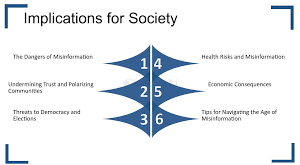Cloud and Edge Computing: Where Synergy Meets the Future of Technology
The technological landscape of the world is changing rather rapidly, mostly because of the upward push of data-intensive applications, IoT, AI, and the growth in demand for real-time processing. The role of the cloud has been that of an important enabler in this dynamic environment, supplying scalable sources over the net for a big selection of applications.
However, because the limitations of centralized cloud infrastructure turn out to be greater apparent, particularly in latency-sensitive and bandwidth-limited packages, side computing has emerged as indispensable complement.
Collectively, cloud and aspect computing shape a potent synergy able to reshape the destiny of virtual infrastructure. Cloud Computing: Backbone of Technology in the Modern Day
Cloud computing might be defined as a model for enabling ubiquitous, convenient, on-demand network access to a shared pool of configurable computing resources-servers, storage, databases, networking, software, analytics, and so on-that can be rapidly provisioned and released with minimal management effort or service provider interaction.
Examples of cloud providers include Amazon Web Services (AWS), Microsoft Azure, Google Cloud Platform (GCP), and many others. Cloud providers allow users to tap into massive amounts of computing power on a pay-as-you-go basis, without requiring significant upfront capital expenditures to buy physical hardware.
Key blessings of Cloud Computing
Cloud computing has changed the panorama of IT in many ways because:
1. Scalability:
The cloud structures come with virtually unlimited scalability. All businesses can expand or shrink their resources dynamically as required, respond to demands that time-to-time change without any substantial investment in infrastructure.
2. cost effectiveness:
The cloud relieves any need for businesses to maintain and upgrade expensive hardware. groups avoid upfront capital costs and best pay for the belongings they certainly use .
3. Global reach:
Cloud offerings are available global, so groups can deploy applications nearer to their customers. This gives you more desirable overall performance and decrease latency.
4. Agility:
Cloud provides a wide variety of resources, from computing power to machine learning, from storage down to DevOps tools. And it basically allows businesses to implement the latest technologies with speed and agility.
5. Security and Compliance:
Large cloud providers offer comprehensive security frameworks, from encryption and access controls down to threat detection. They support businesses in meeting regulatory and compliance obligations.
Cloud computing has transformed industries including e-commerce, finance, healthcare,
and entertainment by giving an infrastructure that is accessible and flexible to foster innovation and efficiency. On the other hand, there are positive limitations posed by the central nature of cloud computing.
Notwithstanding its blessings, cloud computing faces demanding situations, in particular in packages that require low latency, real-time information processing, and excessive bandwidth. Some of the number one boundaries consist of:
1. Latency:
Facts often have to travel long distances between the user and the centralized cloud information facilities. For applications requiring real-time or near real-time responses, such as self-sustaining vehicles, robotics, or gaming, this latency may be a problem.
2. Bandwidth Constraints:
The growth of IoT devices and data-intensive applications can be overwhelming for network bandwidth with the amount of data that needs to be transferred to and from the cloud, resulting in slower performance of applications along with increasing costs.
3. Reliability and Connectivity:
Cloud services rely on net connectivity. In areas where the network infrastructure is poor, this will lead to degraded performance or outage if relying solely on the cloud. Besides, the outage of major cloud providers will cause huge impacts on structured services.
4. Records privacy and Sovereignty:
For some sectors, there are legal provisions to hold data within national boundaries which can be difficult when the data travels through global cloud carriers. questions of information privacy and sovereignty are intensified in a cloud-oriented paradigm .
These limitations led to the development of Edge Computing: a distributed computing concept created to work seamlessly with the cloud.
Edge Computing: Bringing the Cloud closer
Area computing refers to processing information closer to the source of information, at or near the “edge” of the network. Instead of transferring all data to a central cloud data center for processing, processing is handled regionally by edge devices or local area servers. This reduces the volume of information that needs to be forwarded to the cloud, minimizing latency and bandwidth consumption.
Key Benefits of Edge Computing
1. Less Latency:
With records being processed closer to the source, edge computing boasts an extremely low latency. This especially comes in handy for applications in programs such as autonomous vehicles, smart towns, and commercial automation that require real-time decision-making.
2. Bandwidth efficiency:
edge computing reduces the amount of records that wishes to be sent to the cloud through processing it regionally. This can considerably lower community congestion and decrease prices related to statistics transmission.
3. Reliability and Resilience:
Edge computing offers a level of resiliency through the use of enabling applications to function independently of the cloud. When access to the cloud becomes limited or lost, the edge devices are able to continue acting and making decisions.
4. Enhanced Privacy and Compliance:
Processing sensitive records locally at the edge can enhance privacy and help agencies comply with data sovereignty policies by keeping facts within geographic boundaries.
Cloud computing has emerged as especially crucial in IoT applications, where hundreds or thousands and thousands of devices produce immense quantities of statistics that need to be processed and analyzed in real time.
From smart homes and wearables to connected vehicles and industrial sensors, edge computing is powering a new generation of smart infrastructure.
The Synergy between Cloud and Edge Computing
The Cloud and edge are not, taken together, anything special. As a matter of fact, they complement each other in a hybrid version that maximizes the strengths of each architecture.
During this, the cloud and part resources work together to optimize overall performance, scalability, and efficiency. Here is how the synergy works:
1. aspect for real-Time Processing, Cloud for Heavy Compute:
Aspect computing is excellent at real-time records processing on the source, while cloud computing provides huge computing power that desired for facts research, garage, and gadget mastering.
For instance, in an autonomous vehicle, edge devices process sensor data in real-time to make driving decisions, while the cloud may be used for more computationally intensive tasks, such as route planning and fleet management.
2. green statistics drift:
The facet gadgets can clean, mix, and preprocess facts before sending it to the cloud. As a result, much less information will be transmitted as opposed to uncooked information processing, slicing the bandwidth costs and enabling the cloud to focus more attention on complicated processing duties.
In this way, extra community sources can be used in an environmentally friendly way.
3. distributed talent:
aspect computing permits dispensed talent, in which each aspect tool can make unbiased decisions based on nearby facts. however, the cloud still performs a indispensable function in coping with worldwide datasets and imparting insights that may be shared across the network.
4. Scalability with Flexibility:
A hybrid cloud-edge approach enables scalability at the cloud level while offering flexibility in deploying processing power at the edge, which ensures global scalability of solutions while meeting specific performance requirements at localized environments.
5. improved safety:
Combining cloud and edge allows a layered safety version. sensitive statistics may be processed at the threshold, even as less sensitive facts can be sent to the cloud for further processing and garage. This complements each statistics privateness and safety, mainly for industries like healthcare and finance.
Use instances of Cloud and side Computing
Several different industries are already using cloud and edge computing together to open up new opportunities for things like:
1. Autonomous vehicles:
An autonomous vehicle would be generating a huge amount of sensor data continuously, which has to be immediately processed in order for safe driving. The edge computing allows fast decision-making at the level of the vehicle, while the cloud computing supports long-term learning, fleet management, and software updates.
2. Smart cities:
A city that is evermore connected through sensors, cameras, and all IoT devices used to control everything from traffic to power consumption. Edge computing enables processing data locally for real-time decisions, such as changing traffic lights, while the cloud is utilized for broader analysis and optimization.
3. Healthcare:
Wearable devices and smart health monitors generate data that needs to be processed right away for real-time health insight. Edge computing can take care of the local processing of such data to alert patients or medical practitioners right away while cloud computing can store patient information and perform large-scale fitness analytics.
4. Industrial IoT:
Manufacturing plants use connected sensors and machines to discover overall performance and detect anomalies. Edge computing processes data in real time at the manufacturing floor, which enables immediate responses for the capacity concerns.
Cloud computing on other hand can be used for predictive maintenance as well as for process optimisation.
Challenges and future Outlook
While the blend of cloud and edge computing offers several advantages, challenges have to be overcome. A hybrid infrastructure is difficult to manage; strong orchestration tools are required to make the whole thing function seamlessly.
Protection is also a very crucial challenge: decentralized edge devices risk being exposed to attacks, if not properly secured.
Looking to the future, cloud and edge computing will keep adjusting to each other.
With 5G networks rolling out globally, demands for low-latency, high-bandwidth packages will climb, hand in hand, with the adoption of edge computing. Meanwhile, the cloud will remain the central hub for large-scale information storage, processing, and AI-driven insight.
Synergy amongst the cloud and edge computing can be the backbone of the next wave of digital transformation-driving applications that were unimaginable until now.
Thus, cloud and edge computing stand together as a powerful combination in a balance of requirements toward centralized and decentralized processing. Together, they bring flexibility, scalability, and a greener architecture capable of meeting the demands of the most advanced technology:
from autonomous cars and smart cities to healthcare and industrial automation, the future of computing could be shaped by the harmonious integration of cloud and edge technologies.


